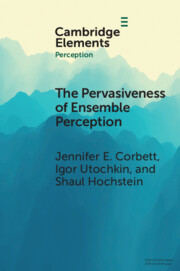Element contents
The Pervasiveness of Ensemble Perception
Published online by Cambridge University Press: 13 January 2023
Summary
Keywords
- Type
- Element
- Information
- Series: Elements in PerceptionOnline ISBN: 9781009222716Publisher: Cambridge University PressPrint publication: 02 February 2023
References
- 15
- Cited by

